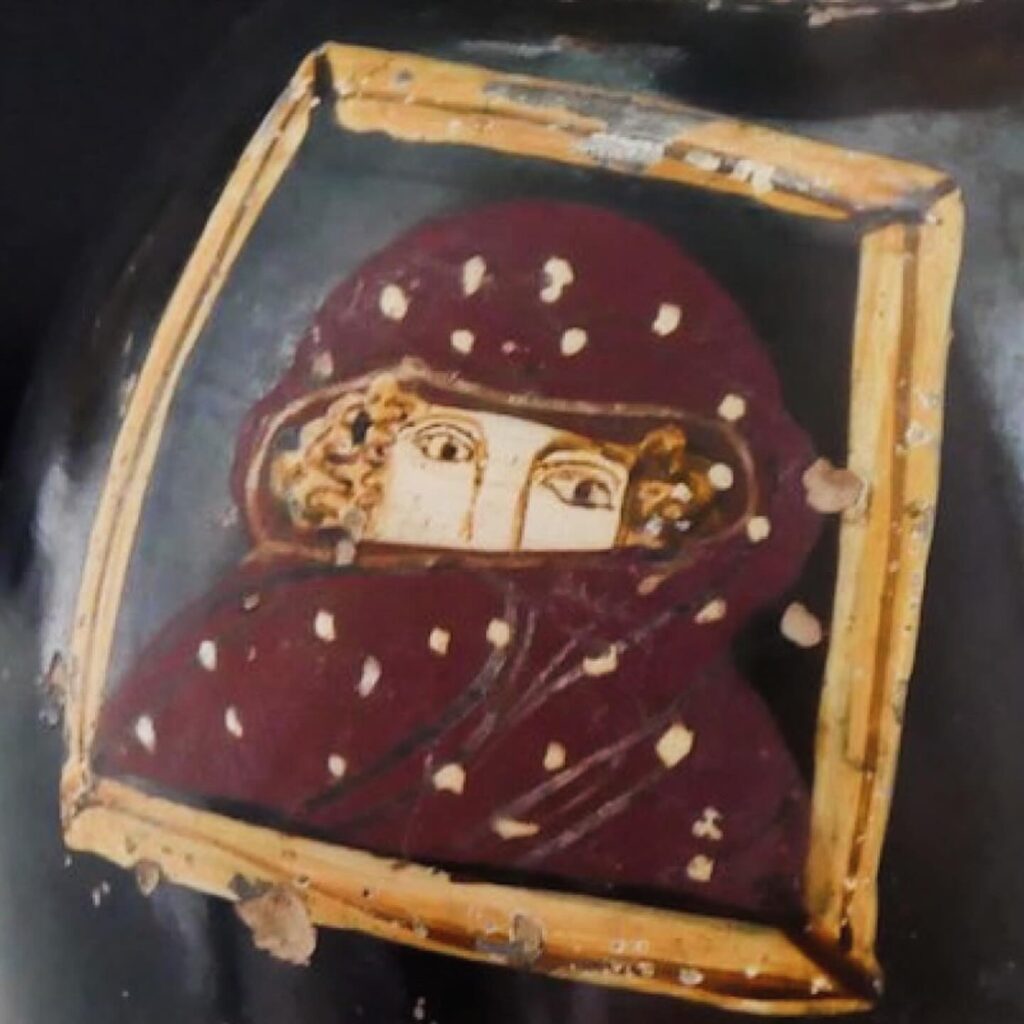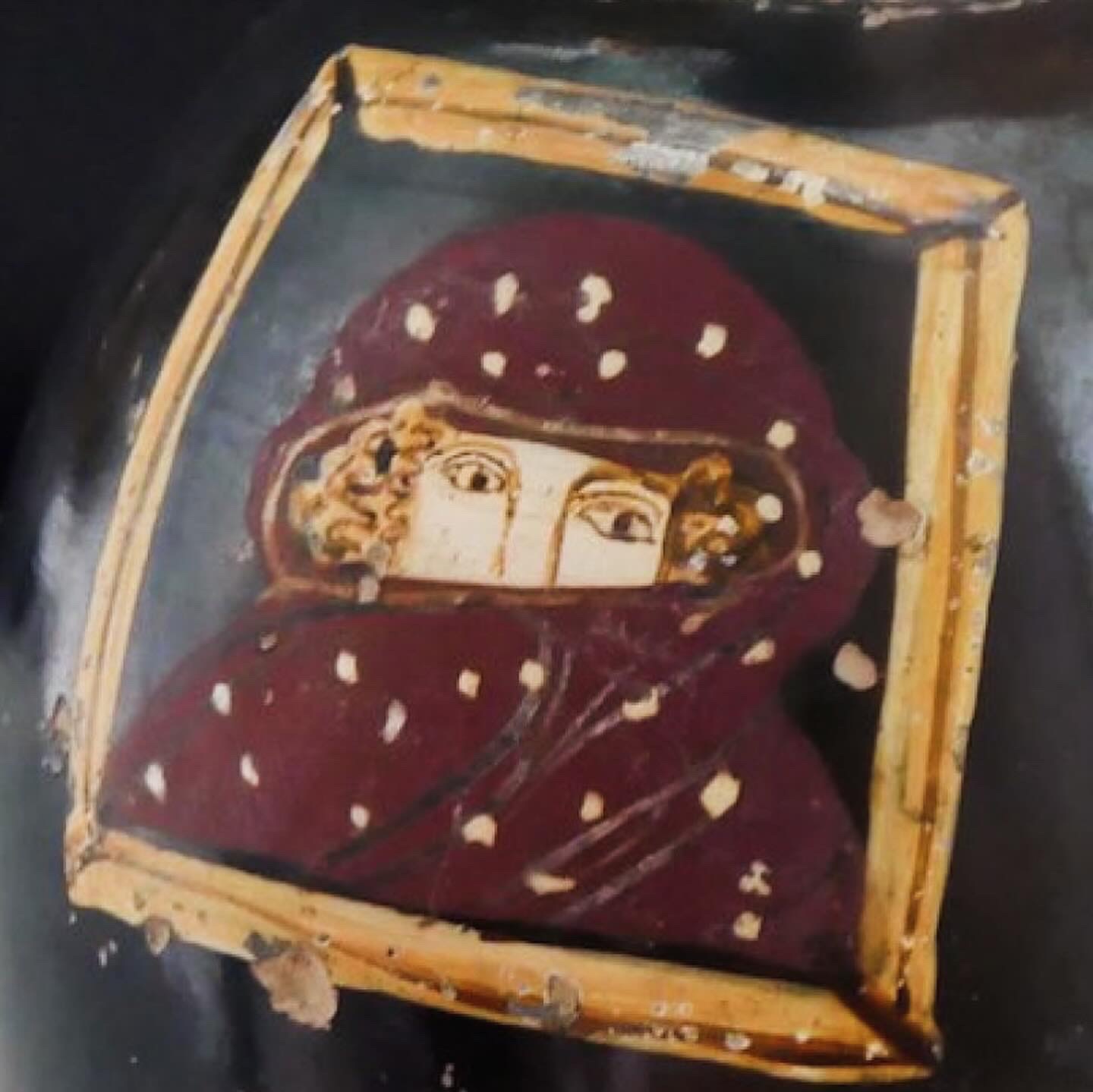The photo might be less than thrilling (vases are hard!) but this is a seriously cool little lekythos in Taranto, with the sole decoration consisting of a woman gazing out from a window, her head and face nearly completely veiled (apart from some unruly blond curls).
Veiling in Classical Greece and the extent to which women were hidden away in the home, has been a matter of considerable scholarly interest since the 70’s (usually with a focus on Athens). The most extreme and pessimistic approach to female agency saw the lives of women as pretty grim (compared to Afghani women under the Taliban), with their freedom outside the women’s quarters completely restricted by male relatives and the veil is usually seen as an extension of this misogynistic climate


That hardliner interpretation has fallen out of fashion in more recent decades, with scholars pointing to the competence and importance of women in the household economy and religious rituals. And how about all those powerful goddesses – where do they come in? Probably there’s something to be learned from each approach.
It all goes to show that reading the (very) distant past and sifting through fragments of available evidence (literary and visual) is always an act of interpretation, and always filtered through contemporary vagaries. And regarding this little 4th century lekythos – who’s to know? Was it an illustration of daily life or a whimsical flourish on the part of the painter, reveling in the possibilities of that added yellow, purple and white on the glossy back background?




